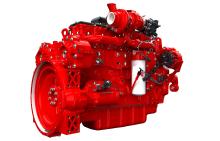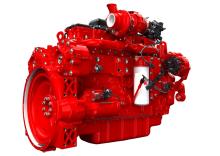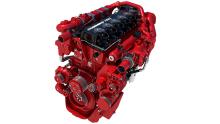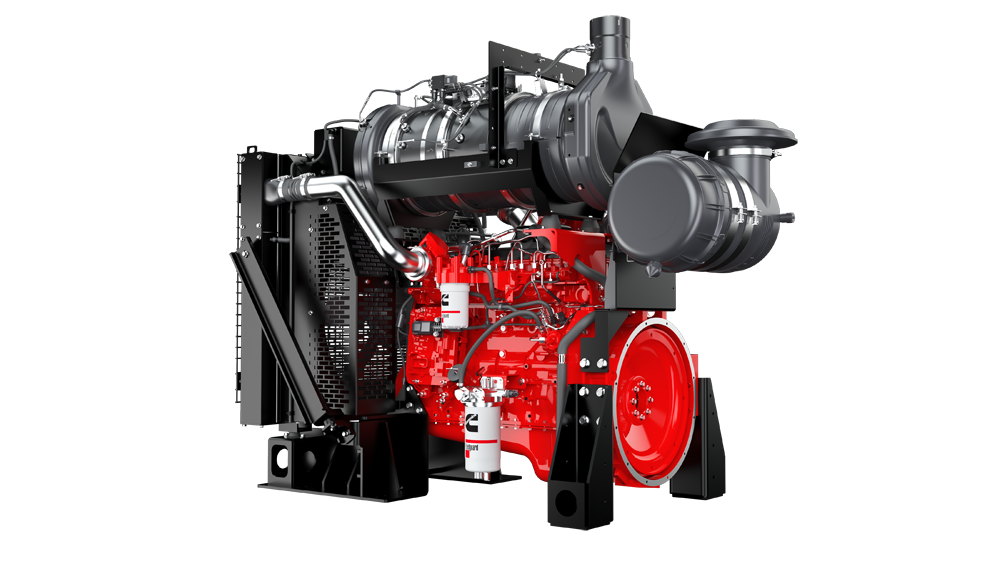
Cummins could see an eight to 12% increase across its off-highway machine engine business in 2021 as the market recovers more rapidly than expected from the COVID-19 pandemic.
That is the view of Eric Neal, executive director of the U.S-headquartered on-highway and off-highway engine maker’s off-highway business, who adds the proviso that the upbeat forecast is valid “as long as we can get the material to build engines. We’ve got a lot of demand right now that can certainly support that growth, and maybe more actually.”

In a COVID-19-hit 2020 of general market contraction, China and, to a lesser extent, India were the countries providing the biggest boost to Cummins’ revenues, both for on-highway and off-highway engines.
Cummins’ full-year 2020 results, published in February, showed that revenues totalled US$19.8bn, 16% down on 2019. Sales in North America declined 21%, and international revenues declined 7%. Sales were down over the year in all major regions except China, where demand for trucks and construction equipment reached record levels.
Speaking to Aggregates Business about Cummins’ 2021 trading outlook, Steve Nendick, the company’s Global Off-Highway marketing communications director, said: “Our recently released Q1 2021 results painted a positive picture of the industry, with strong demand for our products across all global markets. Although this rising demand is encouraging, the rapid pace of recovery has undoubtedly placed a strain on global supply chains, leading to increased challenges. The shortage of key components and bottlenecks in global logistics have been the primary issues we have had to contend with.
“Unsurprisingly, the ability to maintain supply to our customers is our key focus, and we’re doing everything we can to mitigate any impacts of the pandemic. We’re also ensuring that this is done while keeping our employees and stakeholders safe, taking necessary precautions at our facilities to protect against COVID-19. We remain cautiously optimistic about the global vaccine rollout, and we look forward to opening up our offices for people to return when it is safe to do so.”
Nendick said that since Cummins launched its Stage V Performance Series engine range in 2018, the business continued developing products that add value to customers, particularly for quarry and construction markets.
“This is typified by our recently launched Stop-Start capable B6.7 Performance Series engine, which gives operators the opportunity to eliminate unnecessary engine idling whilst still maintaining performance and reliability, leading to reduced overall running costs, noise and emissions.
“This extension of the Stage V Performance Series range follows on from the introduction of power units, ranging from 75-503kW, which make the integration process into applications such as crushers much simpler, thereby reducing the lead-time and cost for OEMs [original equipment manufacturers]. Similarly, we followed this up by adding dual rear-engine power take-offs – REPTO, for short - to our B6.7 and L9 power units, increasing the capability of the engine to power more features on the equipment.”
With no further emissions reduction legislation for off-highway machines expected until 2030 at the earliest, Nendick says Cummins’ engineers are continuing to tailor engines for customer installations to drive efficiency and reliability. “Our work doesn’t stop, and we will bring further developments to the market in the coming years.”
Nendick emphasised the importance of Cummins’ Darlington Technical Centre in North-East England. “It develops engines to meet the latest on-road and off-road emissions regulations for Europe and other regions where the company operates. The team works with the relevant authorities to ensure these products meet the required specifications throughout their useful lives. This includes an in-service monitoring programme for Stage V diesel engines, developing a system to measure real-world emissions in the tough working conditions of construction and quarrying machinery.
“We have plans to develop the centre further and increase its capability over the next few years. The investment will enable us to continue developing and integrating advanced diesel power for on- and off-road use, as well as alternative powers solutions including hybrid, electric, hydrogen and natural gas.”
Nendick said Cummins expects diesel to remain the “go-to power solution” for many quarrying and plant machines for the foreseeable future. “Additional capabilities will help Cummins develop ultra-clean and ultra-efficient diesel engines for the expected Stage VI regulations when they come, as well as Euro VII for on-road vehicles. Work is underway - so watch this space for further news of its progress.”
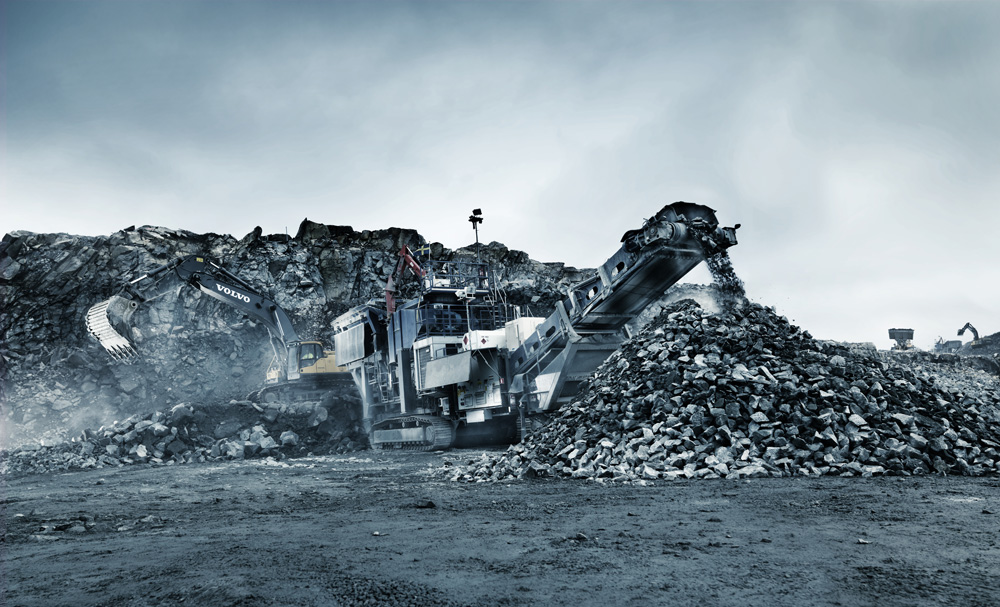
Volvo Penta is another major supplier of engines to global quarrying and mining plant customers. Andreas Nyman, the manufacturer’s manager of Field Test & Data Management, offers insight into the Swedish company’s approach to designing its quarrying and mining machine engines.
“Stone crushers face tougher working conditions than most construction machines. Moreover, their owners and operators need to count on them performing with power and durability at all times,” says Nyman. “An engine failure in a mine or quarry will not only disrupt production but also potentially put operators at risk. So, how can engines be optimised to ensure stone crusher performance and uptime in demanding applications?
“Stone crushers need engines with a correctly specified torque curve and an ability to handle both heavy and light loads effortlessly. The engine needs to run at a high capacity and do so steadily without losing speed when handling heavy stones and rocks or high volumes of sand or gravel.

“Some operators are used to engines failing and may even expect having to restart them from time to time. This practice should be a thing of the past. Your work is much too valuable for you to waste time and resources on engines that cannot do the job.”
Additionally, Nyman says mining and quarrying customer plant engines should have long service intervals. “Two-hundred-and-fifty-hour service intervals are relatively common, but that essentially means that those maintenance breaks that disrupt your uptime are relatively common too. This is partly why Volvo Penta’s engines come with 1,000-hour service intervals. Long service intervals allow you to focus on your operations, without frequent interruptions.”
Engine manufacturers and OEMs should ideally work in close cooperation, says Nyman. He stresses that doing so will foster solutions that are even better at serving the varying needs of their customers. “By getting a better understanding of a particular application or work environment, factors like engine performance, engine maintenance, and fuel consumption can be improved further.”
Nyman says attentiveness and innovation is a key combination when it comes to engine optimisation and development. “All of our Volvo Penta engines can run on HVO 100, for example. This is a much-appreciated feature, not least among customers who want to phase out fossil fuels from their production. There is also a growing interest in diesel-electric solutions for stone crushers. It is a very interesting concept and could be a step towards an increased electromobility portfolio.”
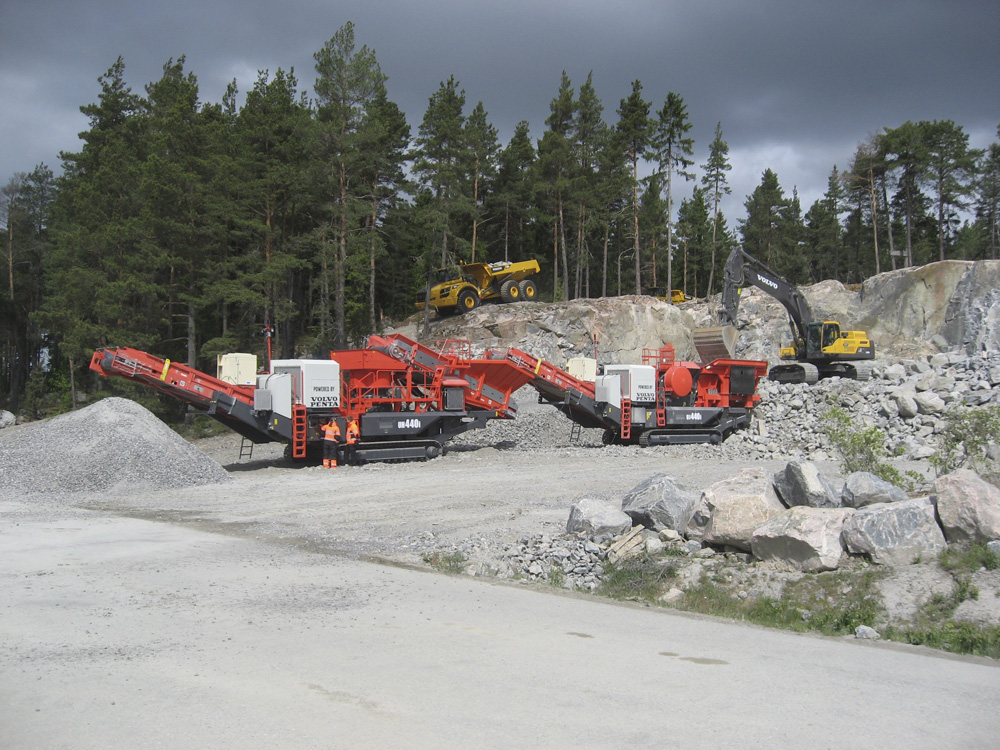
Nyman says Volvo Penta works with its customers out in the field (including down in the mines and quarries) to ensure that its engines always perform as they should, whatever the application.
A good example of this involved a quarrying project north of Stockholm, Sweden. “One of their stone crushers was overpowered for its workload and application. As a result, we decided to shift from the D8 engine to a D5 engine. We also changed the hydraulic pumps and reduced the rpm by half. This did not in any way affect the stone crusher’s performance or uptime negatively. Instead, we managed to cut fuel consumption by more than a third. Not only is that highly beneficial in terms of the significantly reduced total cost of ownership, but it is also certainly better for the environment too. Lowered costs, without any compromise in terms of productivity or quality, in other words.”
To verify an engine’s durability, reliability and performance, Nynas says you have to “test it and test it and then test it some more”. He adds: “As for our Volvo Penta engines, they undergo in-house testing in test cells, as well as field tests. In these field tests, we install the engines in customers’ machines and test them in actual operations. This way, we can see how the engines work in – and respond to – certain applications, climates and environments.
“This rigorous testing process makes it easier to adjust and fine-tune the engines and make sure they come with the right torque response, power, emission requirements, etcetera. Our ambition is to test our engines in as many applications as we can, to make them the best and most well-adapted engines possible.”
Nyman highlights how advanced analytics can be used to study individual engines and components, as well as stone crushers and other machines in their entirety. This enables Volvo Penta and its customers to get an even better, deeper understanding of how they work. And, occasionally, why something may not perform quite as intended.
“Through advanced analytics, more specifically machine learning, you can create a virtual machine that receives and processes data from a physical engine, or a stone crusher, for example. The virtual machine learns from this data, gaining insights that would be difficult to get otherwise. This information is highly valuable in terms of product development. Positive features can be improved, and flaws can be detected, fixed and prevented.
“Data analytics is already a key part of our engine development projects. The next step is to use more advanced analytics on our data. That is now used as a proof of concept but will be the next key part of product and solution development. For example, we have used advanced analytics on data from our customers’ production engines; for predictive maintenance and to learn more and further improve our engines.”
Nyman says Volvo Penta is currently working with OEMs to create state-of-the-art energy propulsion systems. “However, it is our belief and experience that we should collaborate even more closely. Doing so allows us to better support OEMs in quality and maintenance and to continue to meet customers’ requirements as these emerge and develop over time. Moreover, it will put us on a common path towards better sustainability solutions for stone crushers and screeners.”
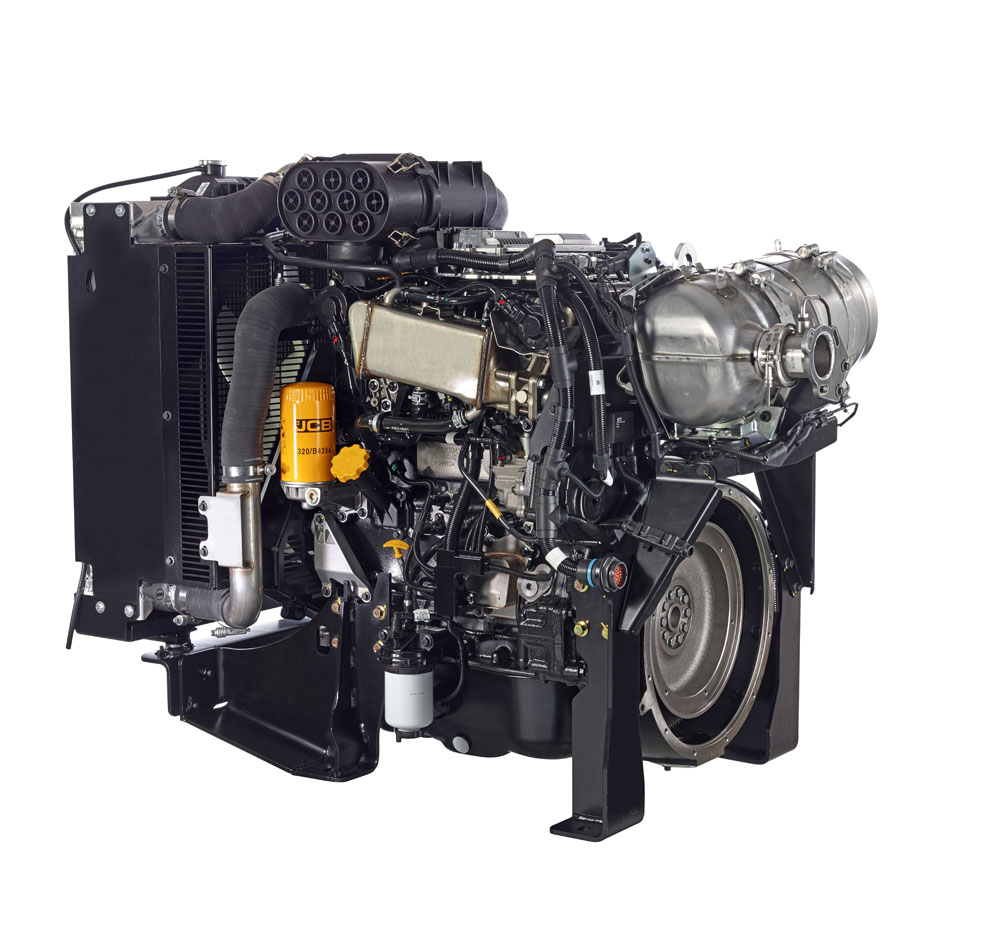
Speaking during a recent JCB virtual press conference event, Tim Burnhope, JCB’s chief innovation and growth officer, stressed how the event-unveiled machines all benefited greatly from the company’s new Stage V-compliant engines.
“The common thread today is Stage V engine technology. We’ve stated previously our clear belief that internal combustion engines will play a leading role in powering construction equipment for the foreseeable future. But the foreseeable future is not forever, particularly when it comes to fossil fuels. We will certainly need alternatives to fossil fuels sooner rather than later. Until then, engines will need to have close-to-zero impact on air quality and offer a route to zero greenhouse gas emissions. Stage V has been an important step on this road to zero.
“As a manufacturer of diesel engines, we have set out to ensure that diesel can be part of the environmental solution, not part of the problem. At Stage V our engines certainly deliver. The three-litre JCB 430 DieselMax engine delivers up to 7% improvement in fuel consumption, a corresponding reduction in CO2 emissions, and a 10% increase in torque to 440Nm for improved response and drivability. It also offers lower noise, virtually zero particulate emissions, and lower running and service costs.
“The higher power 4.8-litre JCB 448 DieselMax engine at Stage V delivers a fuel consumption reduction of over 5%, together with a corresponding reduction in CO2, All our Stage V engines produce virtually zero particulates and NOx [nitrogen oxide]. Our journey towards zero emissions over recent years has been remarkable. We are very proud of what we’ve achieved at Stage V. Our engines lead the way on innovation. This is JCB’s clean diesel technology. It is here now. It delivers on Stage V, future-proofs the JCB range, and sets a new standard for the industry.”
The JCB press conference included the Stage V-compliant versions of the manufacturer’s popular 140X, 150X and 220X crawler excavators – all of which use the JCB DieselMax 448 engine.
Speaking after the event, a JCB spokesperson said: “They [DieselMax 430 and 448] are well suited to quarrying applications due to their robust fuel and induction air filtration systems. Their power density and delivery also suits quarry machines well either within JCB machinery or for loose engine supply into other quarrying and aggregate production machinery.”
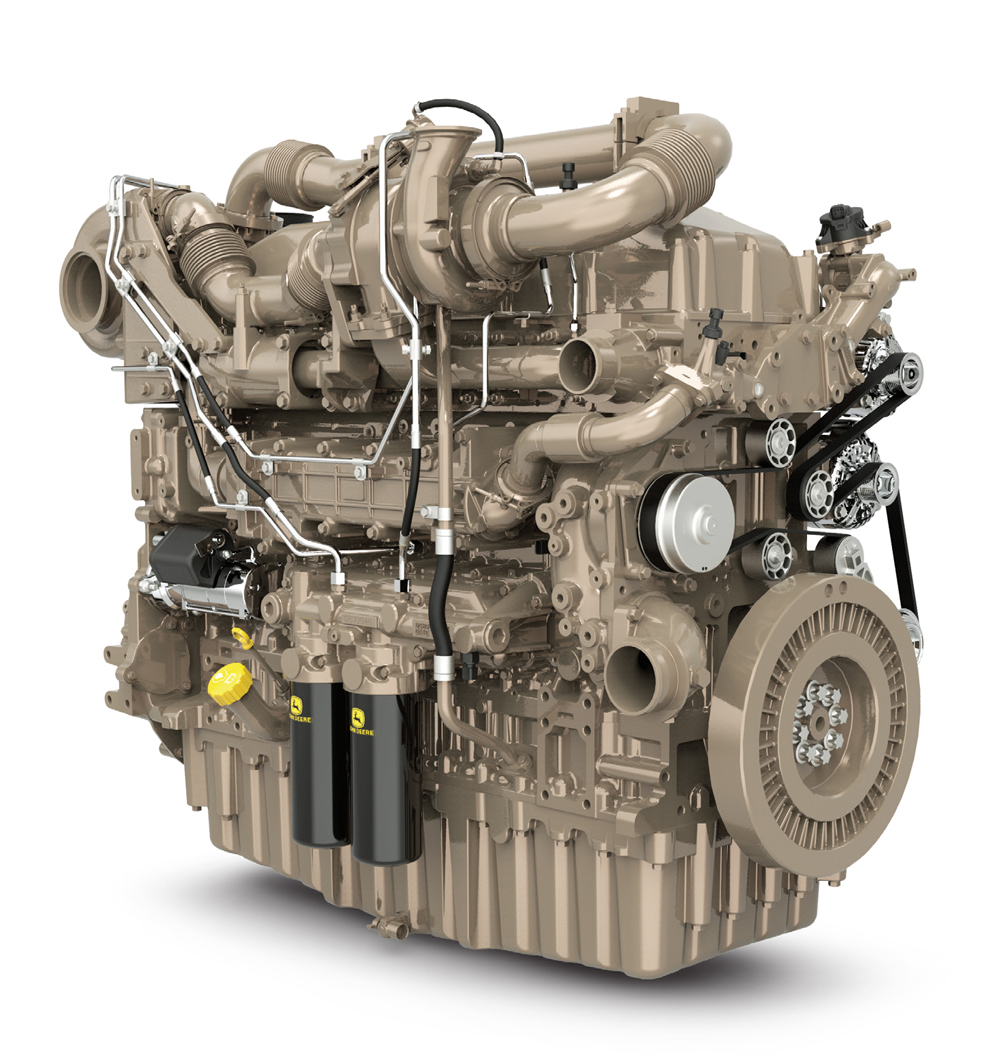
Large engines are well suited for quarrying applications because they provide the power density needed to manage heavy, hard materials. John Deere Power Systems (JDPS) has expanded its engine line-up to accommodate high-intensity, high-horsepower jobs, such as heavy-digging material handling in the mining and quarry industry.
The John Deere PowerTech 13.6L diesel engine provides OEMs with more power per litre than previous 13.5L configurations. John Deere designed this engine specifically to meet customer needs of increased power and torque. With outputs up to 510kW, it has 14% higher power, and 11% increased peak torque, making it a reliable and durable power solution. The John Deere 13.6L engines have been working more than 47,000 hours at high load in various applications. Many operational challenges were even more extreme than typically confronted in the field; repeating high to low loads to confirm thermal durability, block loading to show strength, and ultra-low idling to demonstrate oil pressure capabilities.
Continuing with an analysis-led process first used with the 13.6L engine, John Deere Power Systems announced its new 18.0L engine at CONEXPO in 2020. The 18.0L is the largest engine in John Deere’s line-up, offering rated power up to 676kW.
This engine is the second in a new era of products for John Deere that are engineered specifically to address customer and market needs. The 18.0L engine was designed for extreme durability and is ideal for heavy-duty applications around the world.
Since the 18.0L engine builds on the advancements made during the 13.6L engine development, there are multiple technological and design similarities. These include John Deere model-based controls, a rear gear train and streamlined service and repair capabilities.
The John Deere model-based controls offer advanced prognostics capabilities and reduce the overall number of sensors needed, which improves transient response. Switching the location of the gear train from the front to the rear of the engine reduces noise and torsional vibration. In addition, its streamlined design factored in the top 20 service and repair jobs normally completed on an engine as part of the development process, resulting in reduced repair time. Both engines also feature a three-piece integrated harness with a protective channel — further improving overall reliability.
To meet customer needs for fewer and shorter planned maintenance intervals, John Deere utilised hydraulic lash adjusters (HLAs) in the 18.0L engine design. The HLAs are hydraulically operated and self-adjusting, eliminating the need to manually reset the valve lash — a lengthy service process. This was a key-value point for John Deere customers and internal partners. The 18.0L also features a three-piece integrated harness with a protective channel, further improving overall reliability.
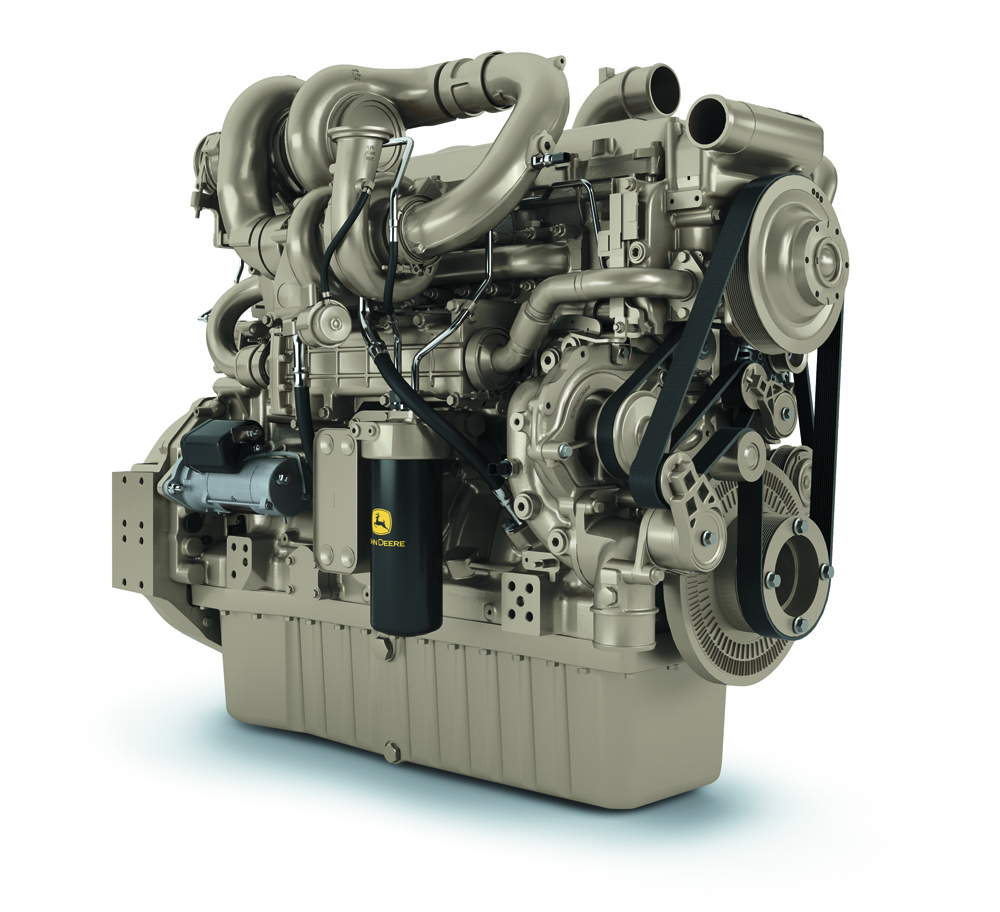
In addition, locating the gear train in the rear of the engine improves durability while enhancing operational flexibility, as it enables more gear-drive auxiliary power take-off capabilities.
There is an immediate benefit to implementing a fully electric solution for underground mining: it eliminates all diesel exhaust. Because the application needs are so specific, mining OEMs can pioneer fully electric off-highway solutions even as battery technology develops.
Electrification helps companies obtain the permits needed to start new mines since it allows them to have a neutral environmental footprint. And while electrification also helps with permitting new mines, it also enables companies to drill deeper into existing mines and expand existing mining shafts. Since they’re using electric vehicles, they don’t need to create extra ventilation as they go deeper underground. Even in mining applications where it doesn’t make sense to run a completely electric system, hybrid solutions offer increased benefits. In the on-highway market, it’s been established that electrification improves fuel economy. This benefit still applies to other applications, reducing overall fuel costs.
Because the John Deere solution includes power-generation and traction-drive components designed to work together, JDPS can work with a vehicle system integrator to provide a solution that generates the right amount of energy for the tractive power. OEMs benefit from the knowledge and extensive experience John Deere has developed in designing efficient, reliable drivetrain systems. John Deere can provide OEM customers with integrated electric-drive generation, traction drive and power electronic components to interface effectively with their unique machine and designed for their specific application.




